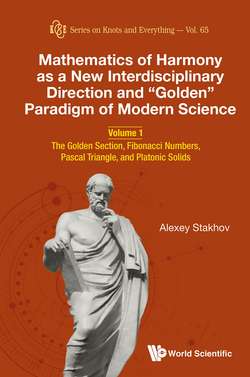Читать книгу Mathematics of Harmony as a New Interdisciplinary Direction and “Golden” Paradigm of Modern Science - Alexey Stakhov - Страница 29
1.3. Proclus Hypothesis and New View on Classic Mathematics and Mathematics of Harmony 1.3.1. For what purpose did Euclid write his Elements?
ОглавлениеAt first glance, it seems that the answer to this question is very simple: Euclid’s main goal was to set forth the main achievements of Greek mathematics during 300 years, preceding Euclid, by using the “axiomatic method”. Indeed, Euclid’s Elements is the main work in Greek science, devoted to the axiomatic description of geometry and mathematics. This view on Elements is the most common one in modern mathematics.
However, besides the “axiomatic” point of view, there is another point of view on the motives that guided Euclid in writing the Elements. This point of view was described by the Greek philosopher and mathematician Proclus Diadoch (412–485 AD), one of the best commentators of Euclid’s Elements.
First of all, a few words about Proclus (Fig. 1.8). Proclus was born in Byzantium in the family of a wealthy lawyer from Lycia. Intending to follow in the footsteps of his father, he left for Alexandria in his teens, where he studied at first rhetoric, then became interested in philosophy and became a disciple of the Neoplatonist Olympiodorus the Younger. It was here that Proclus began to study the logical treatises of Aristotle. At the age of 20, Proclus returned to Athens, where Plutarch of Athens headed the Platonic Academy. At the age of 28, Proclus wrote one of his most important works, Commentary on Plato’s “Timaeus”. About 450 AD, Proclus becomes the Head of the Platonic Academy.
Among Proclus’ mathematical works, the most famous is the Commentary on the first Book of Euclid’s Elements. In this commentary, he puts forward the following unusual hypothesis, which is called the Proclus hypothesis. Its essence is as follows. As we know, Book XIII, that is, the final book of the Elements, is devoted to the presentation of the theory of the five regular polyhedra, which played a dominant role in Plato’s cosmology and in modern science are known under the name of the Platonic solids. Proclus draws particular attention to this circumstance. As Edward Soroko points out in [4], according to Proclus, Euclid created the Elements allegedly not for the purpose of expounding geometry as such, but to give a complete systematized theory of constructing the five Platonic solids; in addition, he described here some of the latest achievements of Greek mathematics.”
Fig. 1.8. Proclus.
